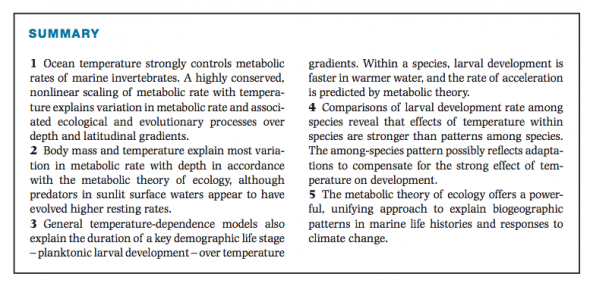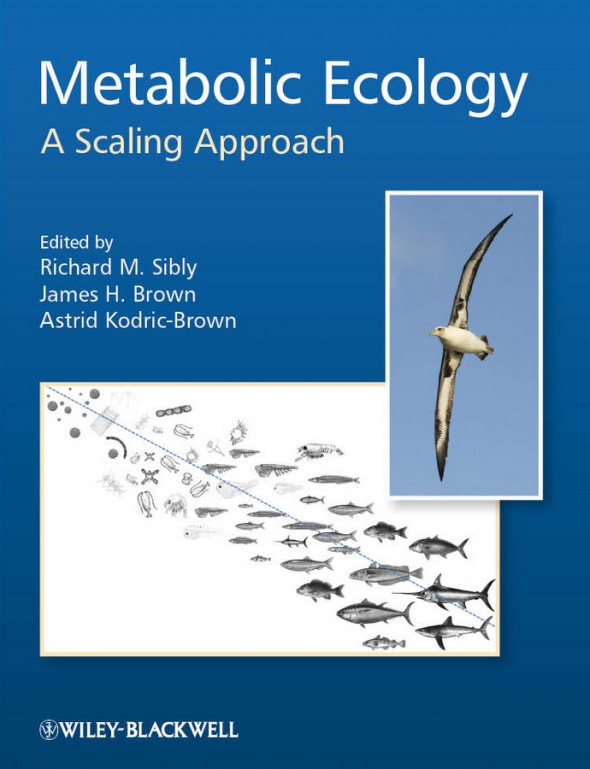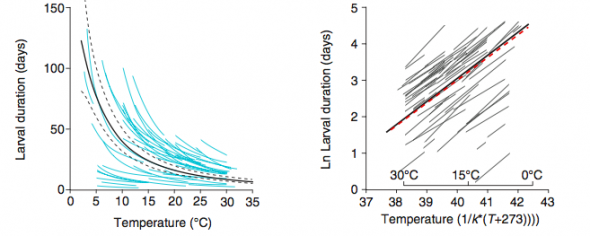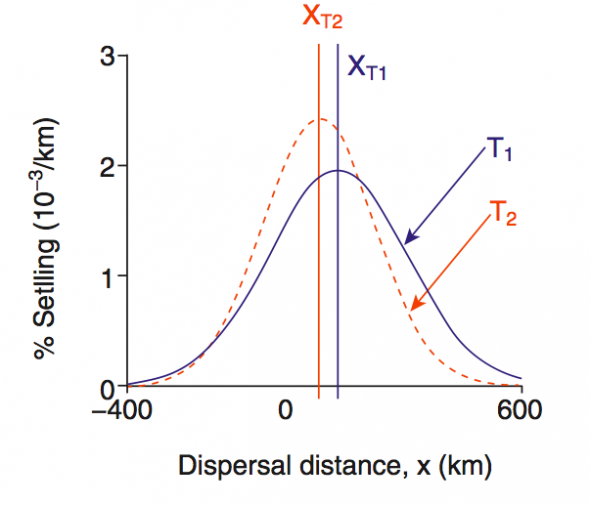I was lucky enough to be invited to coauthor a chapter in the now available book Metabolic Ecology: A Scaling Approach (available at Amazon in paperback and as an ebook!).
“Most of ecology is about metabolism: the ways that organisms use energy and materials. The energy requirements of individuals – their metabolic rates – vary predictably with their body size and temperature. Ecological interactions are exchanges of energy and materials between organisms and their environments. So metabolic rate affects ecological processes at all levels: individuals, populations, communities and ecosystems. Each chapter focuses on a different process, level of organization, or kind of organism. It lays a conceptual foundation and presents empirical examples. Together, the chapters provide an integrated framework that holds the promise for a unified theory of ecology.
The book is intended to be accessible to upper-level undergraduate, and graduate students, but also of interest to senior scientists. Its easy-to-read chapters and clear illustrations can be used in lecture and seminar courses. Together they make for an authoritative treatment that will inspire future generations to study metabolic ecology. – the editors”
The editors included renowned ecologist and MacArthur award winner James Brown and the father of physiological ecology, Richard Sibley. As an MS student, I used the Sibly and Calow textbook in my physiological ecology course, taught by my MS advisor, Peter Edmunds.
There are too many rock star authors to mention, but the list includes Brian Enquist, Peter Vitousek (ecosystems), Dan Costa (Marine Mammals), and Kevin Lafferty (parasites). You can see the entire table of contents here and read a sample chapter here.
I coauthored a chapter on Marine Invertebrates with Mary O’Connor, some text of which Iv’e included below for your reading pleasure. Enjoy!
 The egg and larval development periods are highly sensitive to temperature. For offspring collected from a single population, development occurs faster and the larval period is shorter in warmer water (O’Connor et al. 2007). The near exponential effect of temperature within a non-stressful range is well known, but a comparison of the scaling effect of temperature across a diverse set of species that spanned six phyla showed that the temperature dependence of larval duration is highly consistent with predictions from MTE (Hirst and Lopez-Urrutia 2006; O’Connor et al. 2007):
The egg and larval development periods are highly sensitive to temperature. For offspring collected from a single population, development occurs faster and the larval period is shorter in warmer water (O’Connor et al. 2007). The near exponential effect of temperature within a non-stressful range is well known, but a comparison of the scaling effect of temperature across a diverse set of species that spanned six phyla showed that the temperature dependence of larval duration is highly consistent with predictions from MTE (Hirst and Lopez-Urrutia 2006; O’Connor et al. 2007):
Planktonic larval duration (the inverse of development rate) is strongly and consistently affected by temperature. (A) Blue lines represent curves fit to data on individual species, and the black line is the population averaged trajectory and 95% confidence intervals (O’Connor et al. 2007). (B) Data in A replotted on Arrhenius axes (warmer temperatures to the left) and statistical model (black line) compared with MTE prediction of a slope of 0.62 eV (p < 0.001, red dashed line). At a single temperature, there is still variation among species (e.g., variation among blue lines at 15 °C in (A)).
The generality of the effect of warming on larval duration implies potentially predictable effects of temperature on processes that scale with larval duration, including adaptation, dispersal distance, survival, and population connectivity for benthic marine invertebrates and fish (Hirst and Lopez-Urrutia 2006; Duarte 2007; O’Connor et al. 2007; Munday et al. 2009; Cheung et al. 2010).
Evolution and connectivity depend on the success of dispersing larvae, and their rates of survival and settlement. Larval settlement success depends on the probability that a larva released from a certain point (e.g., a benthic parent population) will settle at any other point. Settlement probability depends on dispersal distance and can be represented as a dispersal kernel (Fig. 15.3A [below]). Predictable variation in dispersal with temperature might translate to quantifiable change in the probability of settlement at a particular site. In the case of a coastline with directional flow, cross-shore transport and eddies, the duration of larval development in the plankton influences the mean dispersal distance, the variance about the mean, and the survival of larvae (Fig. 15.3) (Siegel et al. 2003). By changing the development period, a small change in temperature alone could shift the dispersal kernel, therefore affecting both short- and long-distance dispersal and the associated demographic processes of population connectivity and gene flow (Kinlan et al. 2005; O’Connor et al. 2007; Munday et al. 2009). If unmodified by ecological or evolutionary processes (see section 15.4.2), temperature scaling of planktonic larval duration could lead to broader dispersal kernels in colder climates, or narrower kernels with ocean warming (Fig. 15.3A). Greater population connectivity and reduced community dispersal limitation at higher latitudes are also consistent with broader dispersal kernels in colder regions (Witman et al. 2004; Etter et al. 2005).
A dispersal kernel representing the probability of larvae settling along a coastline (x-axis). Larvae were released from a parental population at 0 on the x-axis, and this model assumes directional alongshore currents with cross-shore transport and random diffusion (Siegel et al. 2003). Kernels are compared for two temperatures (a cool temperature T1 in blue, and a warmer temperature T2 = T1 + 2 °C, in red). The only difference between the kernels is the effect of temperature on planktonic larval dispersal.
As environmental temperature regimes change with global climate change, we must marshal our best ecological and evolutionary theory to anticipate how ecological systems will respond. The scaling models of the metabolic theory of ecology explain substantial variation within and among ecological communities with variation in temperature. Patterns not directly explained by metabolic scaling with temperature, such as trends in metabolic rate with pelagic cephalopods or offspring size in marine larvae, might be explained by integrating evolutionary theory with scaling theory. Such a united theory would provide a powerful approach to understanding the ecological consequences of abiotic environmental change for populations and communities.



Leave a Reply